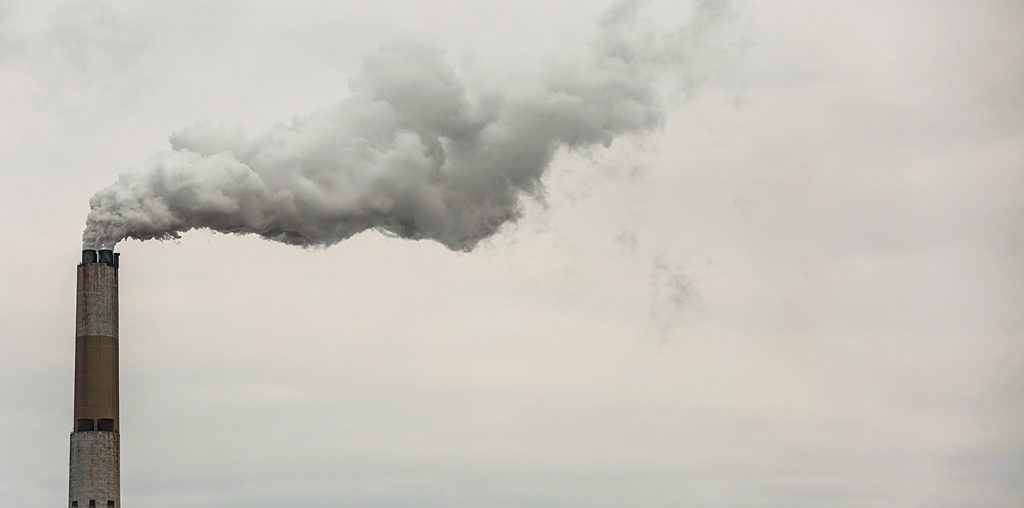Air pollution increases regional health risks
Despite the improvement in the region’s air quality in recent years, southwestern Pennsylvania still fails to meet federal health-based standards for various major air pollutants, such as ground-level ozone, sulfur dioxide and fine particulates, known as PM2.5. And that regional pollution elevates risks of cancer, respiratory ailments and other serious health problems.
Air pollution increases Allegheny County’s cancer risk to among the nation’s highest, according to the U.S. Environmental Protection Agency, which reports that the county has the 21st highest cancer risk in more than 3,200 U.S. counties. And among the 262 counties with more than 250,000 people, Allegheny County’s cancer risk is 10th highest, according to the EPA’s most recent National Air Toxics Assessment (NATA). The 2011 emissions data characterizes the risks of breathing air toxics – a group of nearly 200 hazardous air pollutants ranging from benzene to coke oven emissions that cause cancer or other serious health problems at certain concentrations.
Exposure to toxic air emissions from “point sources,” such as coal-burning power stations and industrial plants, is a particular problem in Allegheny County. Such emissions put nearly 21 people per 1 million population at risk of cancer – a risk level about 20 times higher than what other U.S. urban counties face, on average, from such stationary sources of air pollution, according to an analysis of NATA data by the Clean Air Task Force, a Boston-based environmental nonprofit.
Allegheny County is home to the U.S. Steel Clairton plant, the nation’s largest coke works. And coke oven emissions are the major contributor to the county’s point-source cancer risk. The county’s other coke works when the NATA data was collected – the Shenango, Inc. plant on Neville Island – was closed last year.
One of the most dangerous air pollutants is PM2.5 – microscopic particulates that evade the body’s defenses and penetrate into the lungs, bloodstream and other organs. Exposure is linked to respiratory ailments, stroke, heart disease, and premature death. The largest sources of PM2.5 include coal-fired power plants, steel and coke-making facilities, and cars, diesel trucks and buses. PM2.5 can remain in the air for a week or longer and travel the breeze for hundreds of miles until rain clears the air. Allegheny County is one of only 30 U.S. counties that fail to meet current health-based standards for PM2.5.
“PM2.5 is probably the chief concern for the region, mainly because of its contribution from a source as big as the Clairton plant has an effect over a fairly large area,” said University of Pittsburgh associate professor of environmental and occupational health James Fabisiak.
In Allegheny County, Liberty Borough and several other Monongahela River municipalities immediately downwind of the Clairton coke works experience some of the highest PM2.5 levels, according to the 2012 Pittsburgh Regional Environmental Threats Analysis done by the University of Pittsburgh Graduate School of Public Health.
Because a range of personal health, social and economic factors influence disease rates, it’s difficult to pinpoint the precise effect the Clairton plant has on public health in the Mon Valley and beyond. “Everything that’s a risk factor for bad health is showing up high in that area,” said LuAnn Brink, Allegheny County Health Department deputy director and chief epidemiologist. “It’s difficult to disentangle the smoking rates, poverty rates, lack of health insurance, obesity rates, unemployment and other factors that are affecting health.”
But evidence of air pollution’s risk to public health has only grown stronger over the years.
- The landmark 1993 Harvard Six Cities study found a link between long-term exposure to PM2.5 and high rates of premature death. Steubenville, Ohio, was one of the cities studied. Researchers found that a 10 micrograms per cubic meter increase in PM2.5 results in a 16 percent increase in the risk of premature death – and that reducing PM2.5 by the same amount boosts life expectancy by about seven months.
- Stroke among seniors on Medicare tends to rise 1 percent on days when particulates, sulfur dioxide and other air pollutants are high, according to a 2005 Harvard study of nine U.S. cities, including Pittsburgh.
- In a more recent study of 112 U.S. cities, Harvard researchers report that the risk of heart attack and stroke increases nearly 2 percent for every 10 micrograms per cubic meter increase in two-day PM2.5 levels.
Local studies also suggest that exposure to air pollution increases asthma rates among schoolchildren and asthma-related emergency room visits. In an ongoing study, asthma affected 35 percent of 1,200 elementary school students in the Clairton, Northgate and Woodland Hills school districts, and the Propel school in Hazelwood – communities where air pollution levels have historically been among the highest in Allegheny County. The expected rate of asthma prevalence in the U.S. is 10-13 percent.
“About half the kids in Clairton with asthma are exposed to secondhand tobacco smoke,” said pediatrician and asthma specialist Deborah Gentile, lead investigator of the study. “That’s more than double what you’d expect. But when you track it and control for different things, it’s really the air pollution that seems to be triggering them.”
Such health risks are economic issues as well. A 2013 RAND study, for example, found that reducing PM2.5 levels could result in 13,000 to 15,000 fewer workdays lost to illness and hospitalization each year.
“You’ve got this gradient of risk,” Fabisiak said. “When does that become important? Who decides 100 or 50 or 20 lives lost are acceptable? We don’t know of any safe dose for cardiovascular effects or for asthma. So, the same question can be asked: How many excess cases of asthma are OK? How many premature deaths from cardiovascular disease are OK?”





